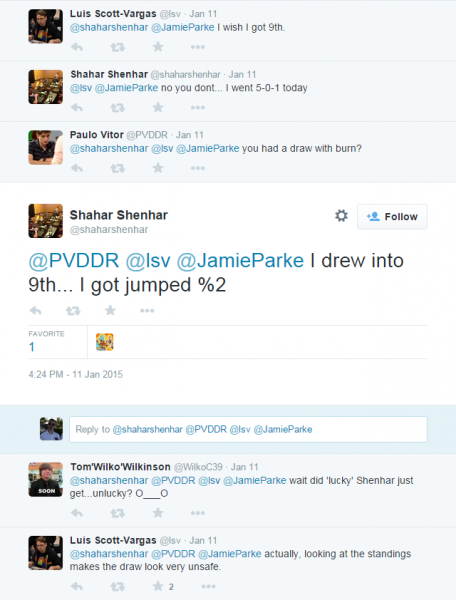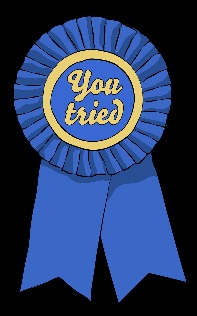Are you a Quiet Speculation member?
If not, now is a perfect time to join up! Our powerful tools, breaking-news analysis, and exclusive Discord channel will make sure you stay up to date and ahead of the curve.
Periodically in the Magic community you'll hear about a high-profile player being involved in an intentional draw resulting in either them or their opponent missing Top 8 and locking up a miserable 9th place finish. Shahar Shenhar was the most recent example of this at GP Omaha.
LSV's last tweet here tells the real story. Compare the round 14 standings to the round 15 standings. The reality is that Stephen Berrios was the only player to jump Shahar on tiebreaks, and Shahar's lead was only slightly higher than .1%.
I'm not sure where Shahar derived his percieved 2% lead from. In all likelihood, it was due to some slightly wonky pairings at the top tables with pair-ups and pair-downs. This is something that you absolutely need to be aware of in the last round of large tournaments. Last round pairings are largely based on standings, but when multiple players have draws near the top of the standings there is a reasonable chance that they drew with one another. Since they can't play each other again, things start to get weird.
At the Super Sunday Series event in Denver, the last round saw three 19 point players all paired against 18-point players, all vying for two Top 8 slots. It's a strange spot for everybody. I was one of the 18-point players, and if the pairings weren't so peculiar I would have scooped to my opponent to help his seeding in the Top 8. Interestingly, the lowest seeded 18-point player in this shuffle couldn't have actually Top 8'd given his tiebreakers. I battled valiantly for what ultimately ended up being a clean 9th place and unfortunately eliminated my opponent from Top 8.
The long and short of this is that there is a lot to consider before drawing in the last round. Personally, I usually talk to people whom I know know more about tiebreaker math than I do- people whom I consider an important part of any Magic network. Don't trust your gut, and definitely don't trust your opponent.
Knowing when to draw can also be very relevant for medium cash finishes in tournaments such as Grand Prix and Star City Opens. In particular, since there is no difference between a Top 16 and a Top 32 in an Open, there are a lot of tables that end up playing when they could just as easily draw into the same prize that they're playing for.
Before sitting down for the last round, always consider what you're playing for. Check the standings, and find out the range of places you can get with every outcome of your match. Other tables drawing will obviously impact this, but with pairings based on standings you can be relatively certain that very few tables lower than yours will be able to jump you if they also draw.
I start by analyzing the data with no consideration for tie-breaks and just looking at the places determined by match points alone. If things are unclear, that's when I appeal to the statisticians.
Check out the pairing for the final round of Omaha. Shehar's opponent is obviously safe with a draw at 38 points, but there are a lot of 34-37 point players that Shehar would have to fade with a draw. Five to be exact, with 3 other players already locked for Top 8 above Shehar (his opponent and both players at table 1). The Sheopard vs McClain table is dead for Top 8 on breakers on one side and points on the other, but three other tables position the winner for a Top 8 birth, and table 3 drawing locks another player above Shehar and makes Stephen Barrios a relevant concern.
Interestingly, Stephen Berrios' draw was equally precarious, but ultimately his draw at table 3 worked out better than Shehar's at table 2. The truth of the matter though, is that both players should have elected to play in round 15.
Drawing into a bad position sucks. Losing when you could have drawn is also terrible. Know what you're playing for, and use your resources to find out if you have to play. Doing so will help you avoid such unfortunate circumstances.







Hey, great article. I really enjoy the creative stuff. Thanks for writing this & providing an inspiration.
If Shenhar drew, he had 4 people definitely beating him in points, 2 people having 37 or more and then 4 people who could possibly get 37 (all with lower tiebreaks before last round). So 2 out of those 4 had to both actually get the 37 and then beat Shenhar in the tiebreaks. While drawing there was definitely not 100% safe, I think drawing is the right choice there unless you are pretty sure (like 80%) you can beat your opponent when playing.